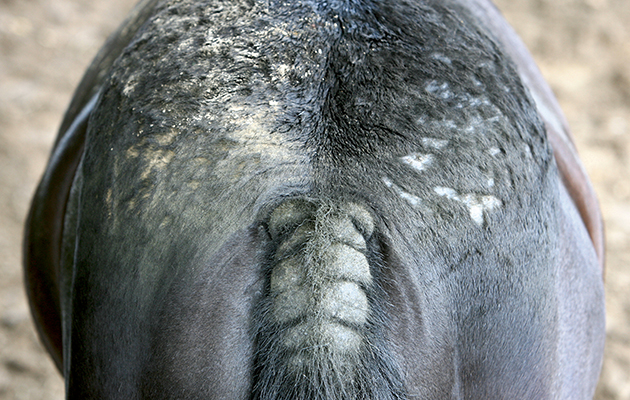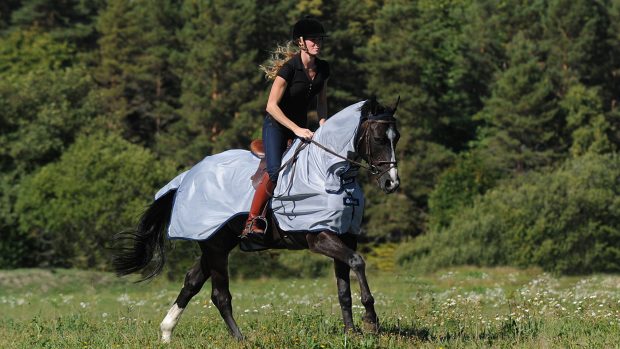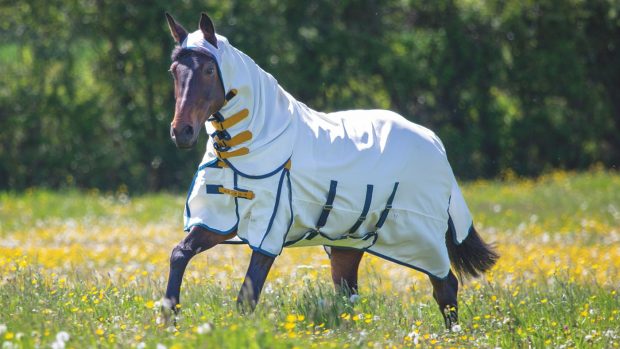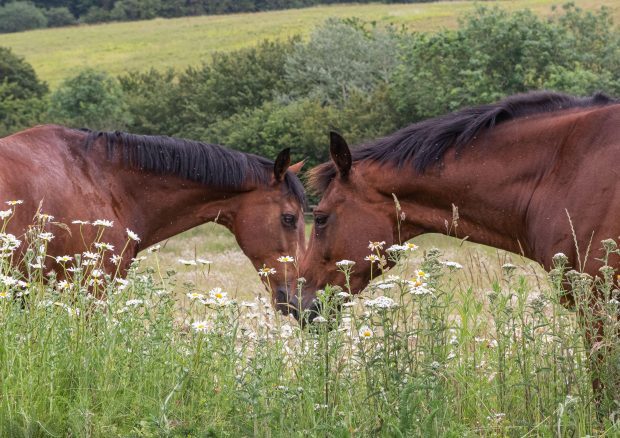Ceiling fans, avoiding watercourses and important skincare tips — don’t let sweet itch cause you and your horse misery this summer.
Richard Morris MRCVS, director of Fenwold Veterinary Group, an XLEquine member practice, shares the following top tips for managing this common allergic skin disease.
When managing sweet itch make sure you do:
1. Call your vet to investigate your horse’s skin problem. There are a large number of causes of equine skin diseases, such as fungal (ringworm), bacterial (rain scald), parasitic (lice, mange), as well as allergic reactions to bedding, insect bites, dust mites and pollens.
2. Use insect repellents or fly sprays regularly to reduce attack from biting insects.
3. Use a fly rug or a sweet itch rug to help avoid contact with the biting insects.
4. Install a ceiling fan in the stable — midges can’t fly if the wind speed is over 5mph.
5. Apply a fly screen to the stable door.
6. Use topical oils (such as Avon Skin So Soft) to discourage midges and black flies from landing on the skin and feeding.
7. Move your horse to a windy hillside where there is less chance of encountering biting insects.
Things to avoid
8. Don’t keep your horse near watercourses and trees, where there are high numbers of biting insects.
9. Don’t leave your horse outside at dawn and dusk when it is open to attack from biting insects.
10. Don’t only rely on corticosteroids because of the risk of laminitis.
Fast facts about sweet itch
- Sweet itch is an equine hypersensitivity reaction to biting insects. In the UK these are the black fly (Simulium) and the midge (Culicoides), which are active from March to November.
- They swarm at dawn and dusk in wooded areas near slow-moving streams, and the females need a blood meal to form and lay their eggs in the soft mud, and so settle on any nearby animals to feed.
- Signs develop from four/five years of age and get worse as the animal gets older.
- It affects about 5% of UK horses, and is the most common allergic skin disease.
- There is a strong hereditary component with certain breeds being over represented (Welsh, Shire and Icelandic breeds).
- The main sign is itching of the mane, base of the tail, and under the belly.
- Initially the problem is seasonal, but it becomes progressively worse over time and eventually affects the individual all year round.
- Self-inflicted trauma from rubbing produces hair loss, bleeding and thickening of the skin.
- Diagnosing sweet itch is best by your vet, because there are many types of antibodies involved in allergies and, to date, blood tests have not been helpful.
- Intradermal skin tests can be useful. A vet will also take skin samples to help rule out other similar diseases, such as ringworm, lice and chorioptic mange.
You may also be interested in…

Skin and coat supplements: what’s on the market?

8 rugs to help protect horses who are prone to sweet itch

Sweet itch in horses: what all horse owners need to know

Laminitis: how to spot the signs, plus treatments and ways to prevent it

Subscribe to Horse & Hound magazine today – and enjoy unlimited website access all year round
Horse & Hound magazine, out every Thursday, is packed with all the latest news and reports, as well as interviews, specials, nostalgia, vet and training advice. Subscribe today and enjoy the magazine delivered to your door every week, plus unlimited website access and digital versions of the magazine dating back to September 2012.




